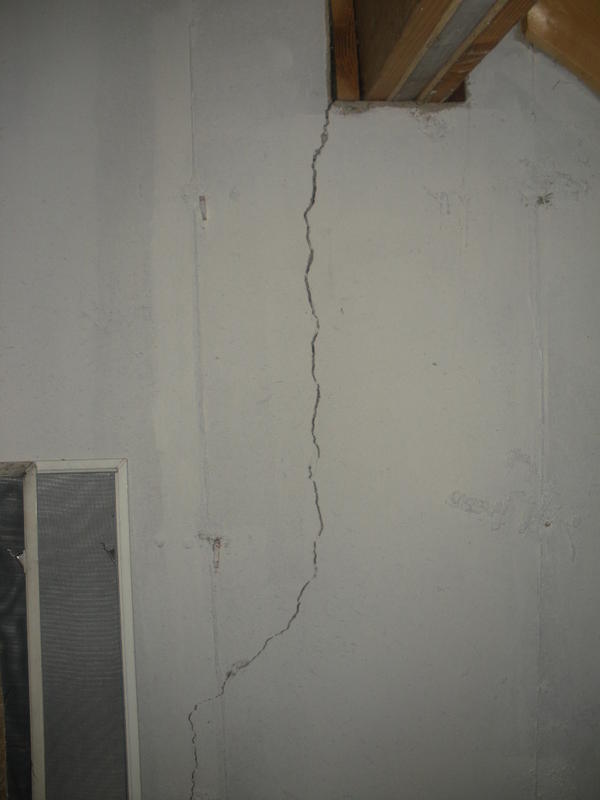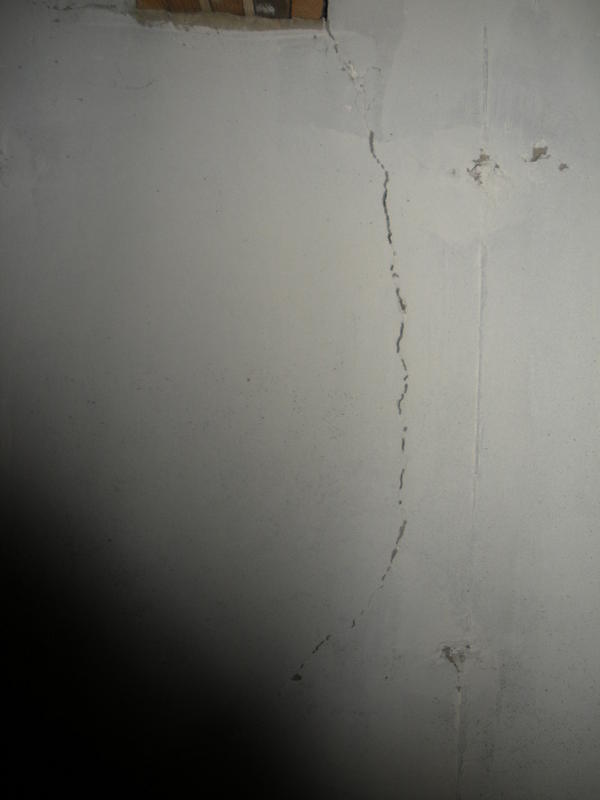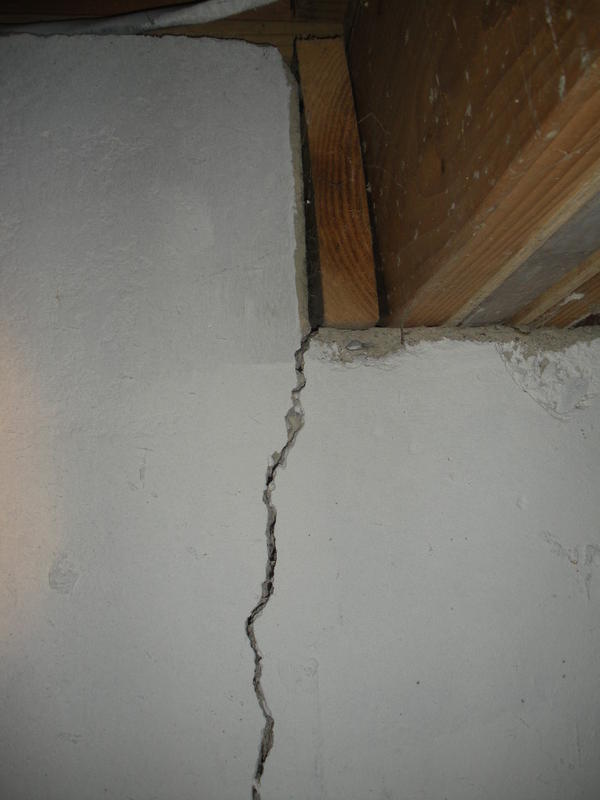Found these cracks in a foundation of a town house today. Four unit townhouse, this unit is #3 of four (built 1989). The cracks were on two walls under the main beam. These walls were between the units and not outside foundation walls. They were the only cracks I found. There did not seem to be any recent activity. No displacement. These are normal cracks found in a poured foundation, correct? That is what I told my client. Does it make a difference that these are walls between the units and not exterior walls?
First three pixs are one crack and next two are on other side.
David
From a structural standpoint a beam pocket or window in a concrete wall will typically cause a crack to develop at one or both corners, usually from shrinkage stress in the concrete. However your crack appears to be something else, first of all the majority of shrinkage cracks develop within the first 6 months, the crack in your picture occurred after the wall was painted. This leads me to believe the wall cracked well after all normal shrinkage occurred. Second the crack appears to be wider at the top, hard to tell from the photo. If so, that would require some rotational movement of the wall. I would ask the owner/tenant when the cracked developed to get some some idea of the timeline involved. Was it a recent crack or did it develop over a long period of time? Just based on your photos I would call it out as an unusual crack and suggest it be monitored over time to see if the crack continues to widen. Just make two reference points on either side of the crack (at the top), measure the distance and record the distance and date on the wall for future reference.
Thanks for the reply. This is a REO, so no help from the owners. The crack does get wider at the top. Also the beam at one end is not level. It appears to have lowered over one crack.
David, this crack looks more like a settlement crack.
It is very common for a crack to occurr in the location of a bondout such as a beam pocket as was mentioned, but typically it is minute in nature and caused by the shrinkage and weakened area of the beam pocket.
If reinforcement in the wall would have been installed, this might not have been excessive as we see.
There should have been other signs in the basement area to indicate some sort of settlement that caused that crack, such as slab to wall intersections, and wall to wall intersections, where interior wall meets exterior. There are always other signs of movement.
Not seeing the whole picture in the field is hard to evaluate.
Recommending a qualified licensed foundation contractor might help. 





